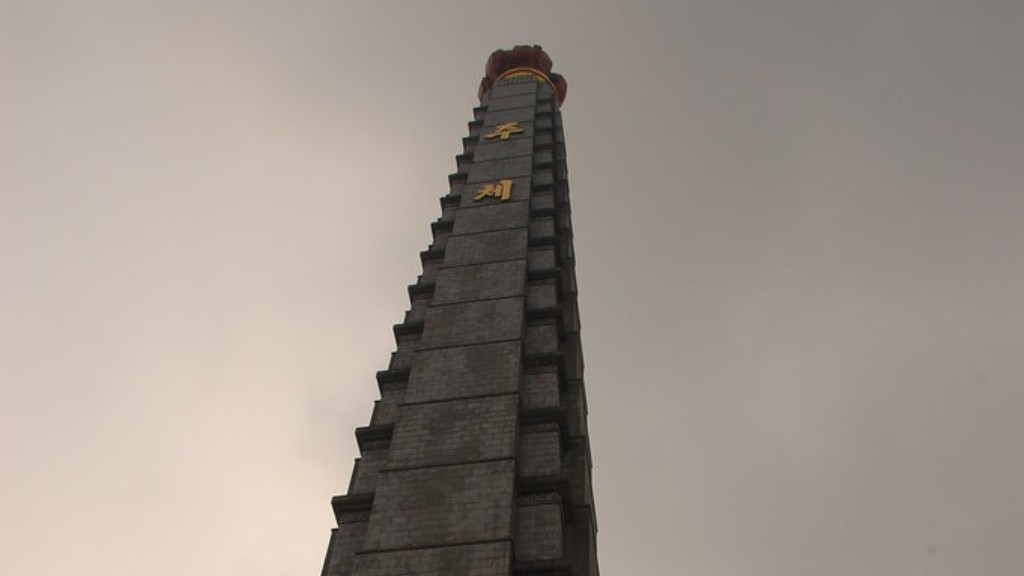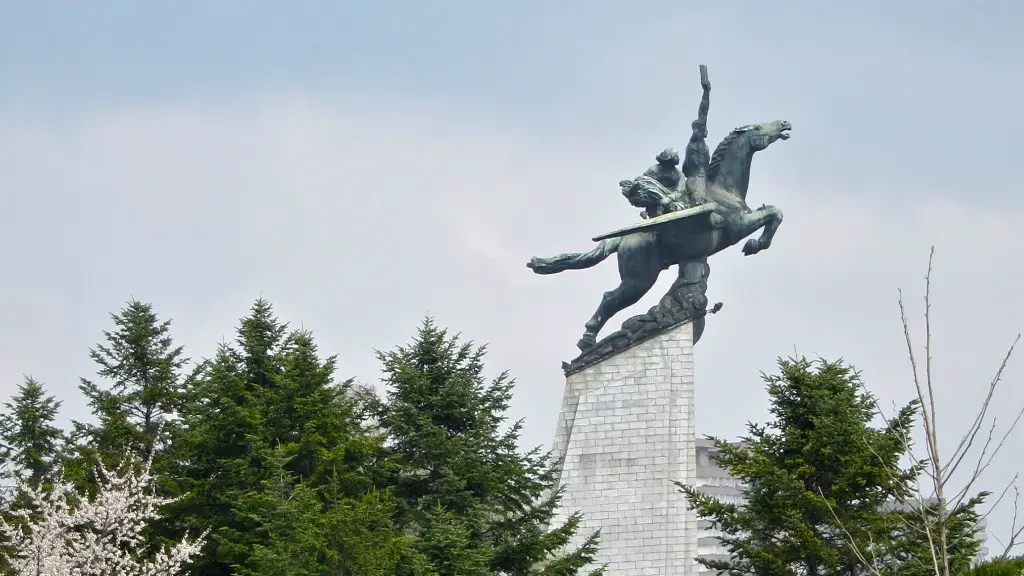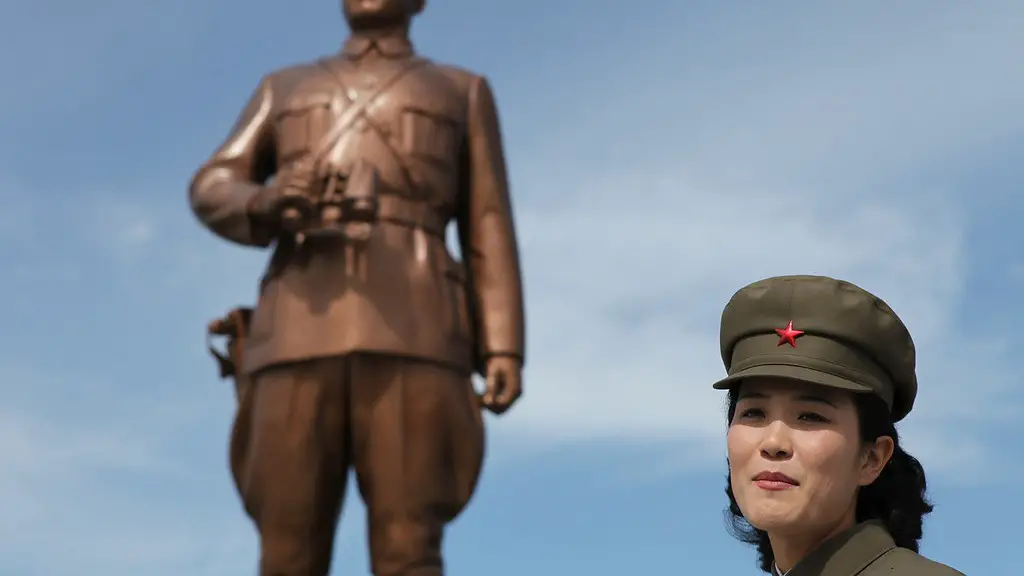Introduction
North Korea is a mysterious country shrouded in secrecy, and its rich history has barely been explored by outsiders. The official name of North Korea is the Democratic People’s Republic of Korea (DPRK), but this was not always the case. Before the creation of the DPRK in 1948, North Korea was known by a variety of different names. This article will explore the major historical changes in North Korea’s eponymous history, as well as North Korea’s past names and what each of them meant.
Ancient Times – Gojoseon
North Korea has a rich and complex history that stretches back to ancient times. Archeological evidence suggests that the area that is now North Korea was first inhabited as early as 35,000 B.C. By the 4th century B.C., a state known as Gojoseon had been established in the region. This state was ruled by the legendary King Dangun and was later annexed by the Chinese Han Dynasty in 108 B.C. After this, the region was known as the Korean Peninsula, and it was ruled by the Chinese from 108 B.C. to 313 A.D..
Three Kingdoms of Korea (37 B.C – 676 A.D)
In 37 B.C., the Three Kingdoms of Korea (Goguryeo, Baekje, and Silla) arose in the Korean Peninsula, and these kingdoms were defined by their different territorial boundaries. Goguryeo occupied the area of the northern Korean Peninsula and Manchuria, while Baekje occupied the southwestern corner of the Peninsula, and Silla occupied southeastern Korea. In 676, Silla defeated the other two kingdoms and unified the entire Peninsula under their rule.
Balhae and Goryeo Kingdoms (698 – 1392 A.D.)
After the fall of Silla in 668, two kingdoms arose in the Korean Peninsula: Balhae and Goryeo. Balhae was a kingdom founded by the Mohe people of Manchuria that occupied the northern Korean Peninsula and part of Siberia, while Goryeo was a kingdom founded by the ruling elite of Silla that occupied the southern Korean Peninsula. The two kingdoms had different socio-political structures and were divided by the Tumen River. Balhae was eventually annexed by the Khitan Liao Dynasty in 926, while Goryeo was able to maintain independence and continue to rule the southern portion of the Korean Peninsula.
Joseon Dynasty (1398-1897)
In 1398, the Joseon Dynasty, founded by Yi Seong-gye, overthrew the Goryeo Dynasty and ruled over the Korean Peninsula until 1910. During this time, the name “Korea” was derived from the Joseon Dynasty often referred to as “Joseon,” which was derived from Gojoseon, the first ancient Korean kingdom. After the defeat of the Qing Dynasty in 1895, Korea had begun to develop a sense of nationalism and a strong desire for independence.
Japanese Rule (1910-1945)
In 1910, the Joseon Dynasty was overthrown by Japan, who then annexed Korea and changed its name to Chosun, which was derived from the name Goryeo. During this period, Korea was known as the “Land of the Morning Calm” due to its geographical location and its people’s spirit of tenacity. Under Japanese rule, Korea underwent a period of modernization and development, but also suffered great hardships due to oppressive Japanese policies.
Division of Korea (1945-1948)
After Japan’s defeat in World War II, Korea was divided into two zones along the 38th parallel, in order to manage the country’s transition from Japanese rule to a more independent state. The northern zone was governed by the Soviet Union, while the southern zone was governed by the United States.
The Creation of the DPRK (1948-present)
In 1948, the Republic of Korea (ROK) was created in the southern zone and was governed by a pro-U.S. president, while the Democratic People’s Republic of Korea (DPRK) was created in the northern zone and was governed by a pro-Soviet president. The DPRK initially sought to unify Korea under its rule, but the Korean War, which lasted from 1950-1953, led to the permanent division of Korea into two separate states. Since then, North Korea has remained an isolated and secretive state, and is officially referred to as the Democratic People’s Republic of Korea (DPRK).
North Korea’s Nuclear Weapons Program
North Korea’s nuclear weapons program is one of the main contributing factors to the country’s international isolation. Despite international sanctions and condemnation, the North Korean government has continued to pursue nuclear weapons as part of their national defense policy. In 2006, North Korea conducted its first successful underground nuclear test and since then, it has conducted five more tests, culminating in its sixth and most powerful test in 2017. Such tests have led to further international condemnation, and the imposition of even more stringent sanctions by the United Nations Security Council.
Human Rights Abuses in North Korea
North Korea has a long history of human rights abuses which have been condemned by the international community. In 2014, a report released by the United Nations Commission of Inquiry documented numerous instances of grave human rights violations, including torture, arbitrary detention, and summary executions. These egregious human rights violations have resulted in widespread international criticism of the North Korean government and its oppressive regime.
North Korea’s Relations with the International Community
Since the end of the Korean War in 1953, North Korea has remained isolated from the international community, both diplomatically and economically. However, in recent years, North Korea has sought to improve its relations with a number of countries, including the United States, South Korea, and China. In 2018, North Korean leader Kim Jong Un held three highly publicized summits with South Korean President Moon Jae-in and U.S. President Donald Trump. Such negotiations have raised hopes that North Korea may become a more open and transparent state in the near future.
Conclusion of North Korea’s Pasts Names
The history of North Korea is long and complicated, and the country has been known by a variety of names over the course of its history. From Gojoseon to the Democratic People’s Republic of Korea, North Korea has seen many incarnations and its current name, the Democratic People’s Republic of Korea, reflects the country’s deep-seated commitment to its people and its desire for an independent and unified nation.



